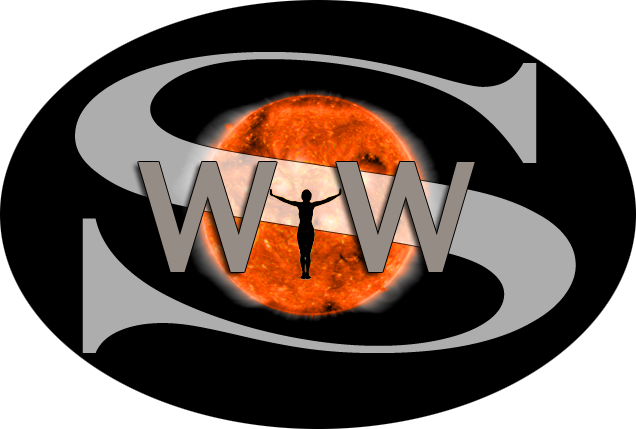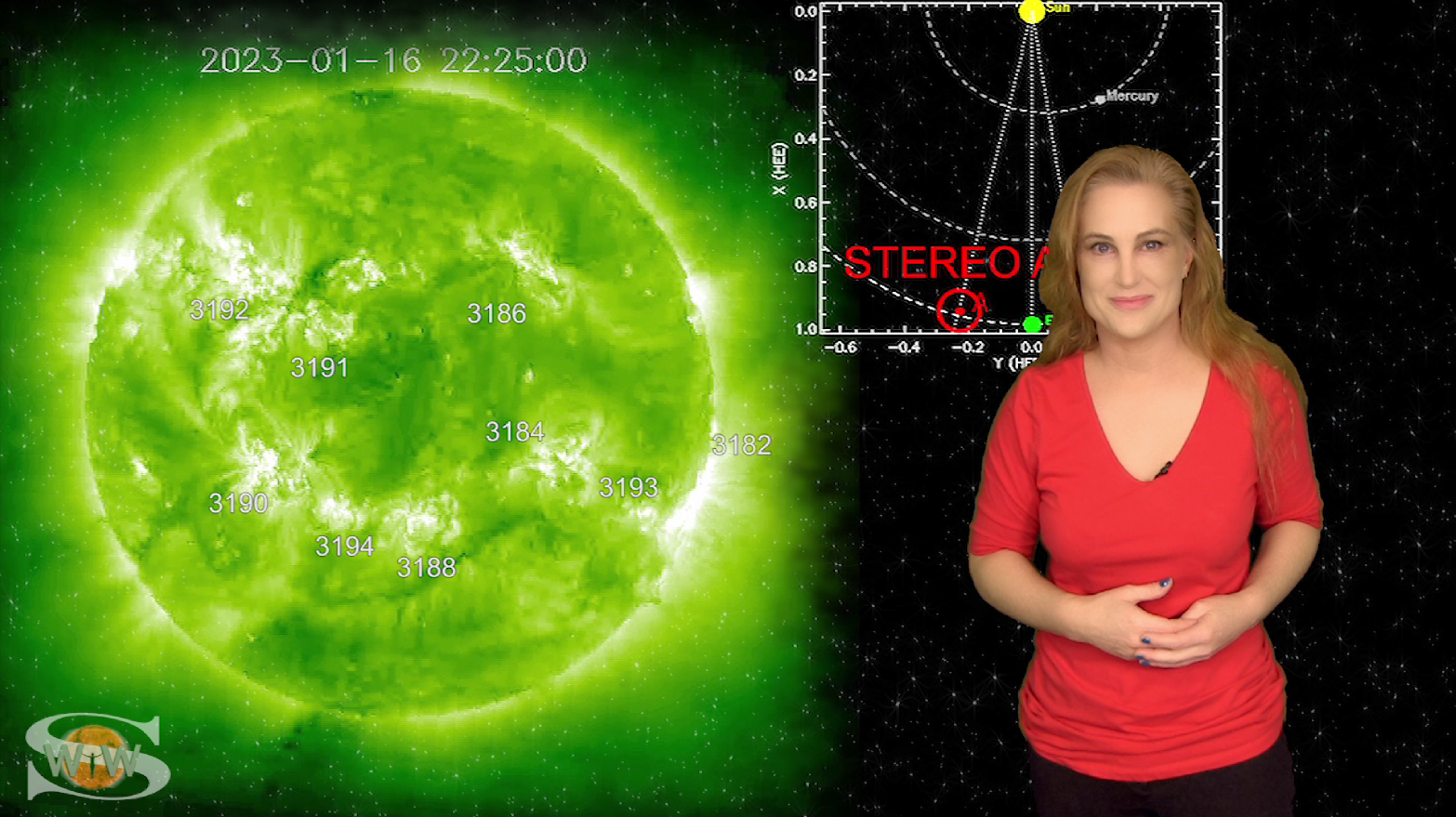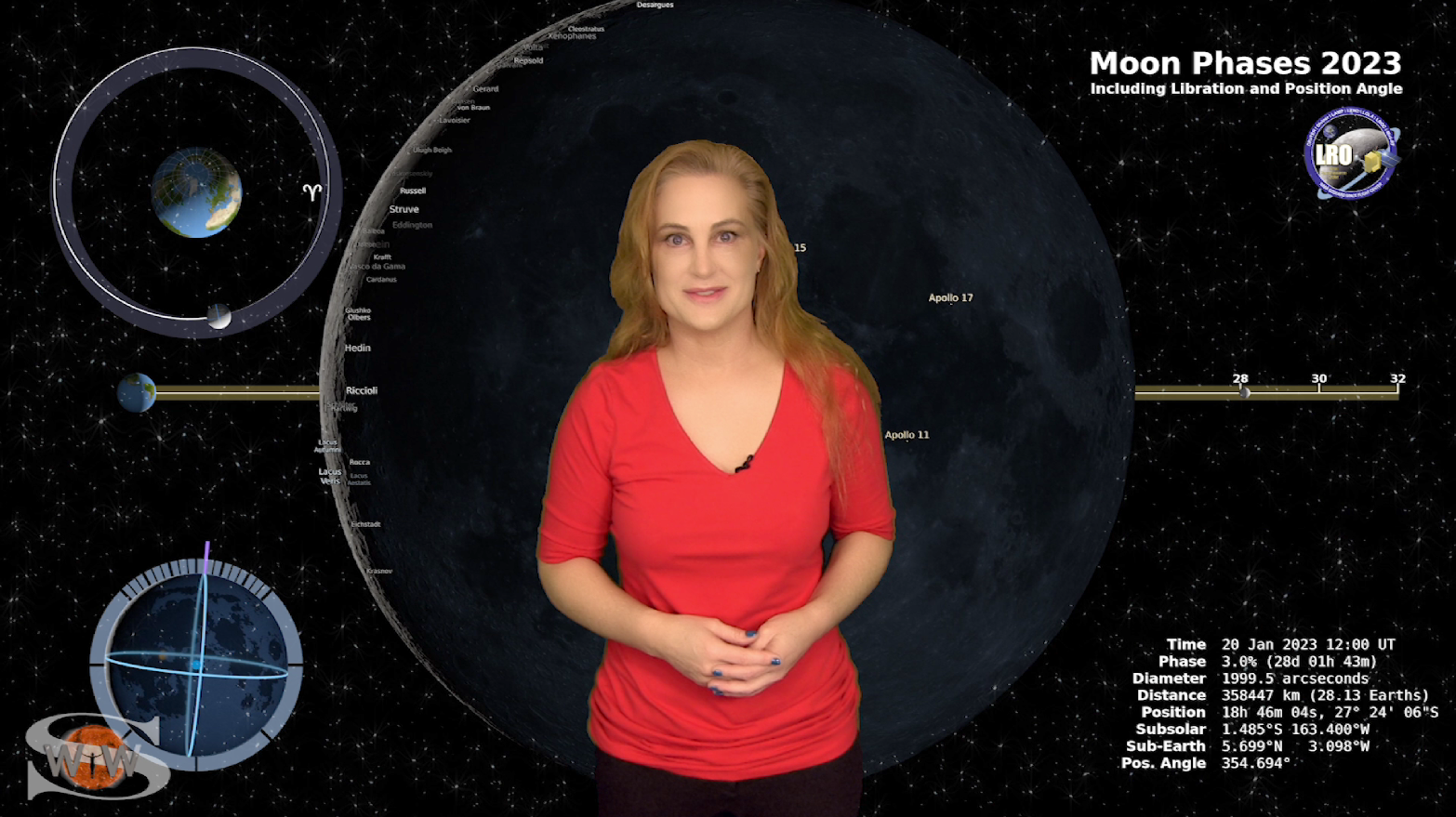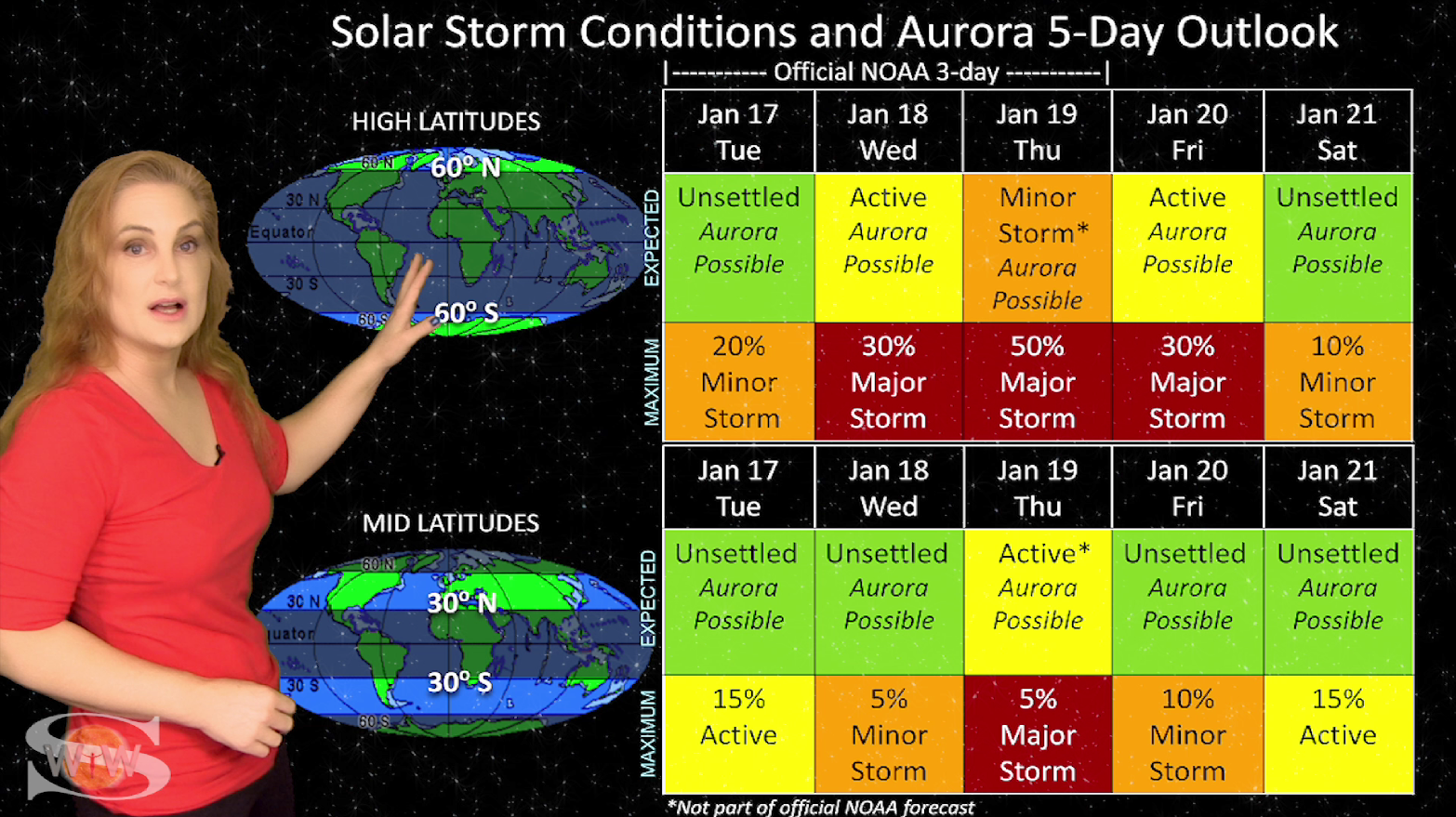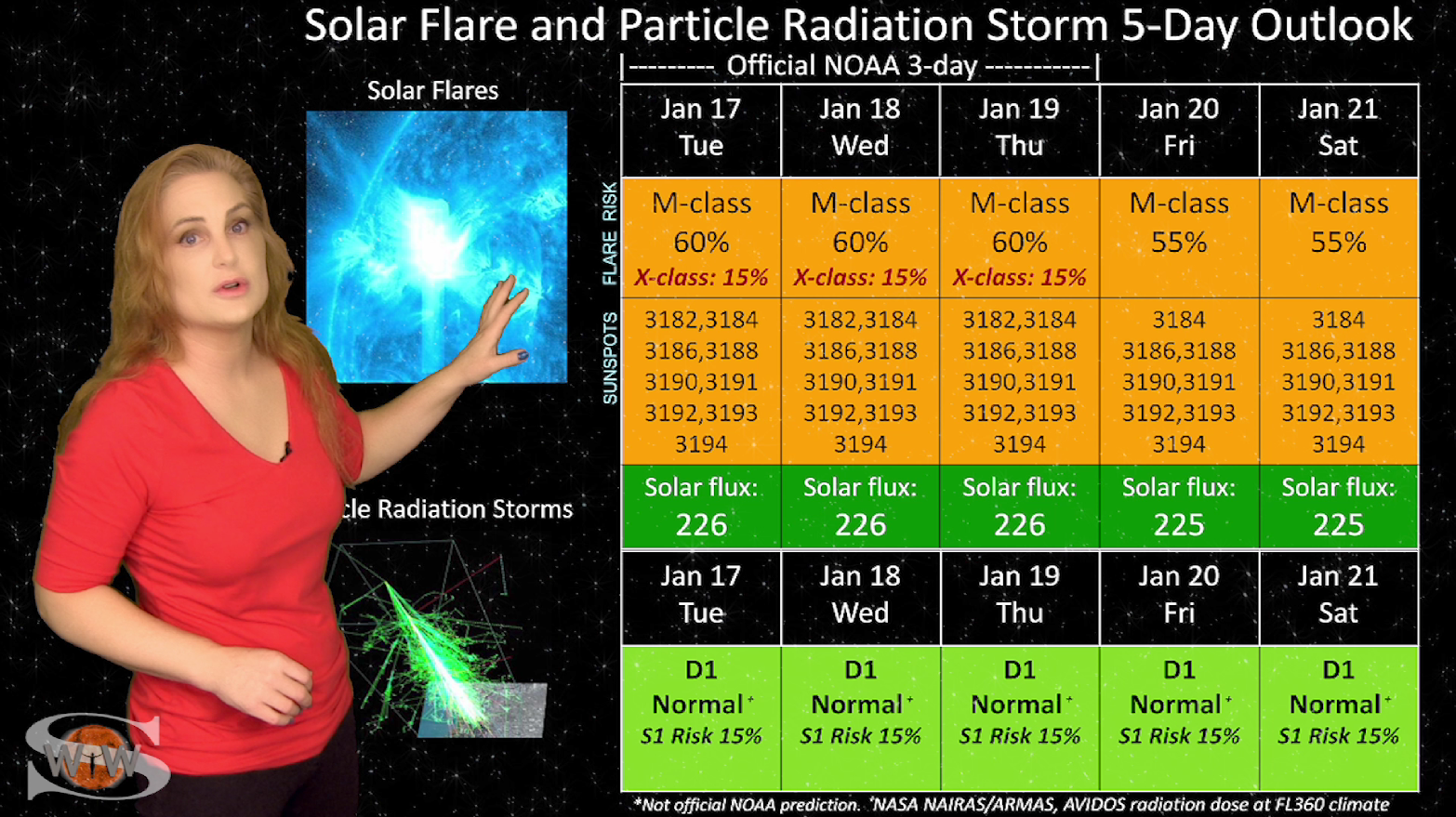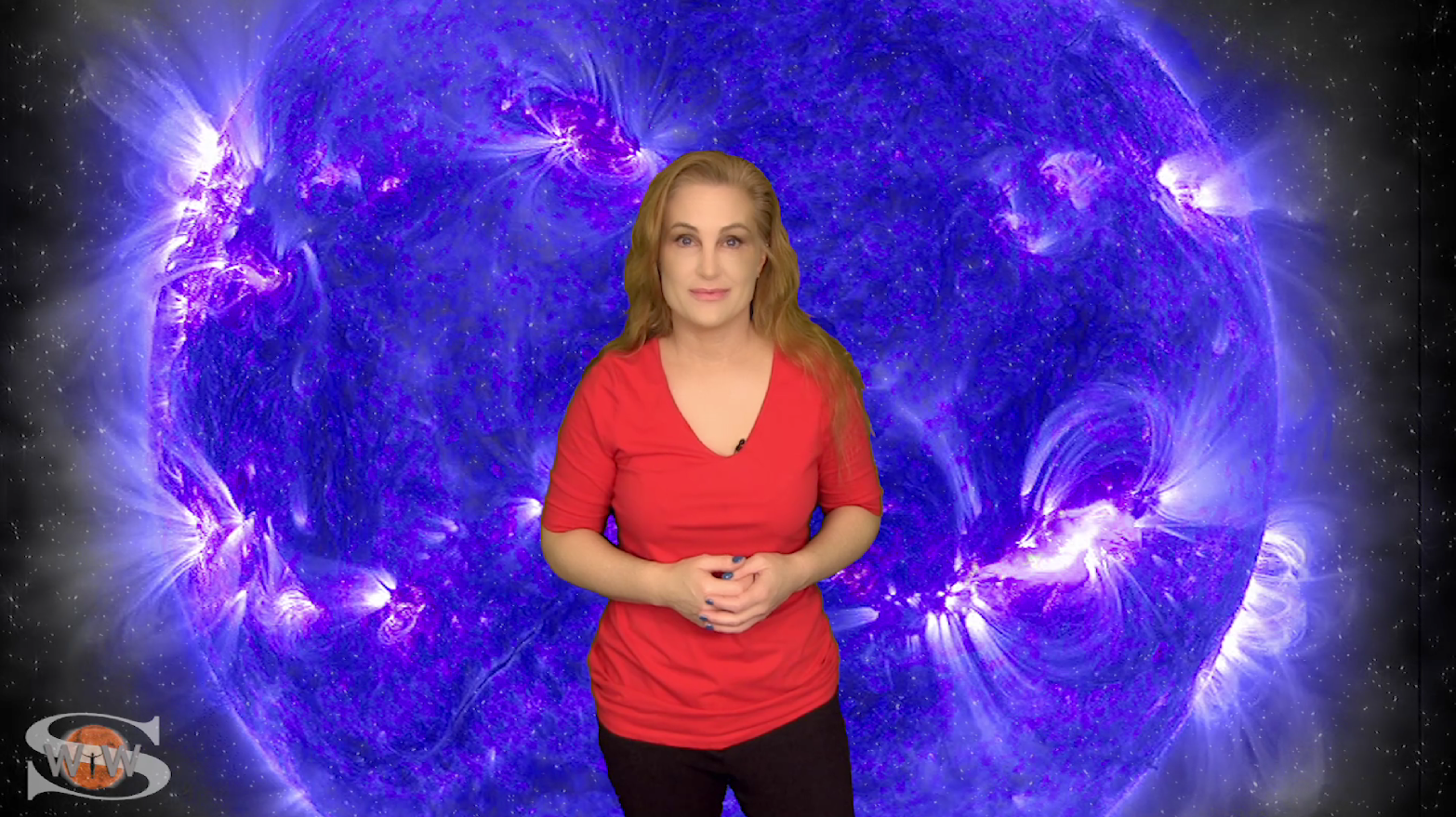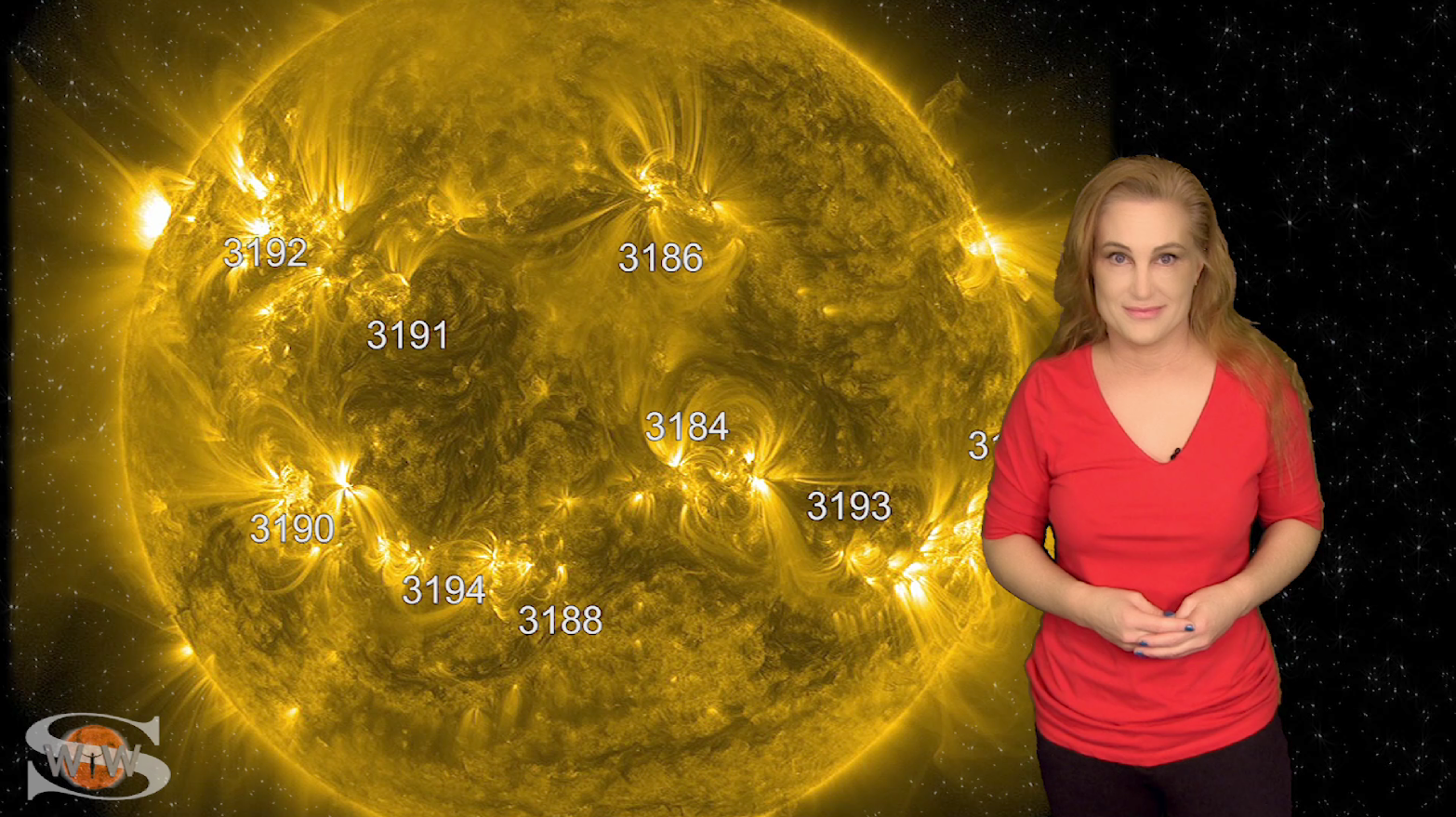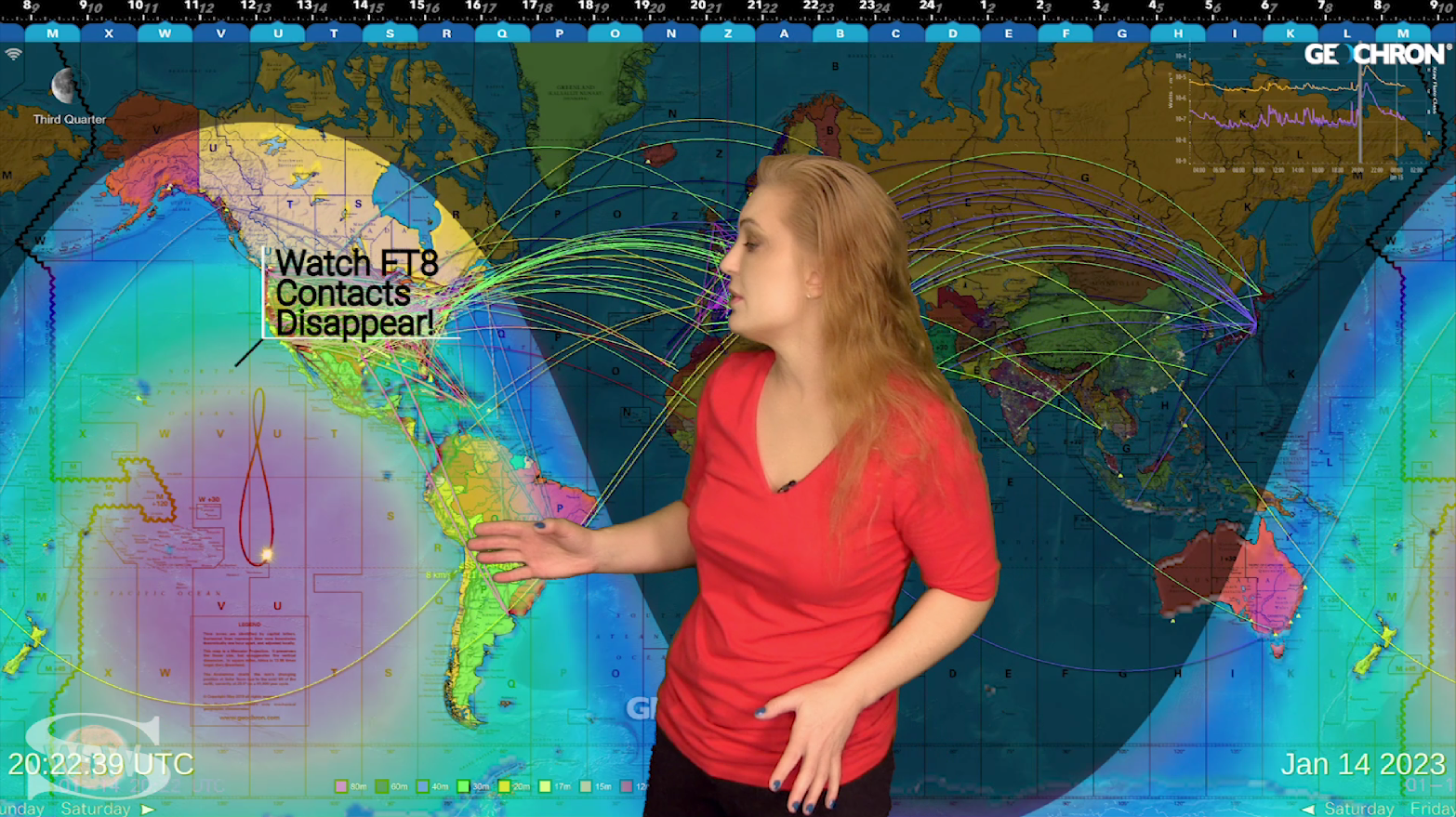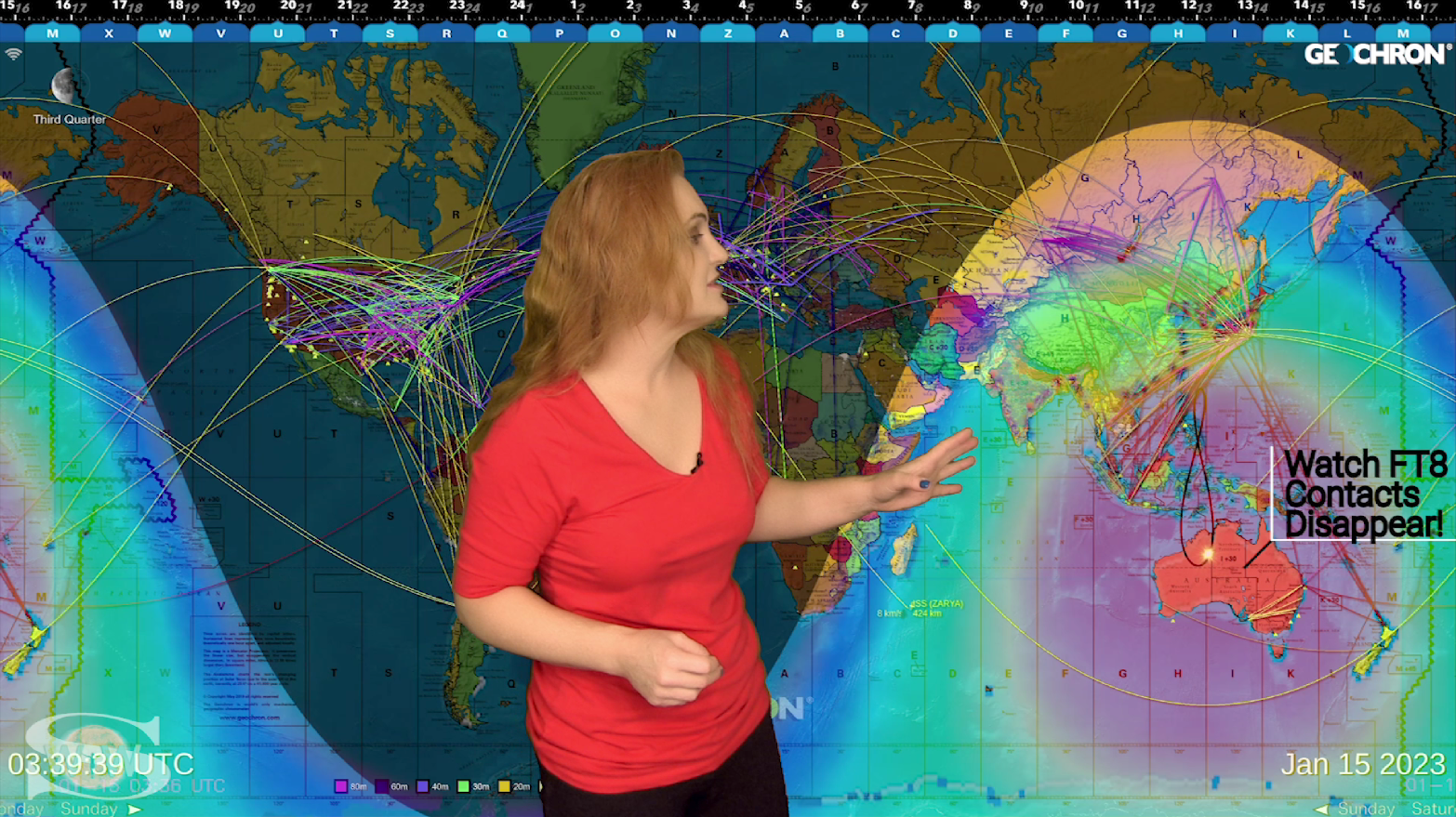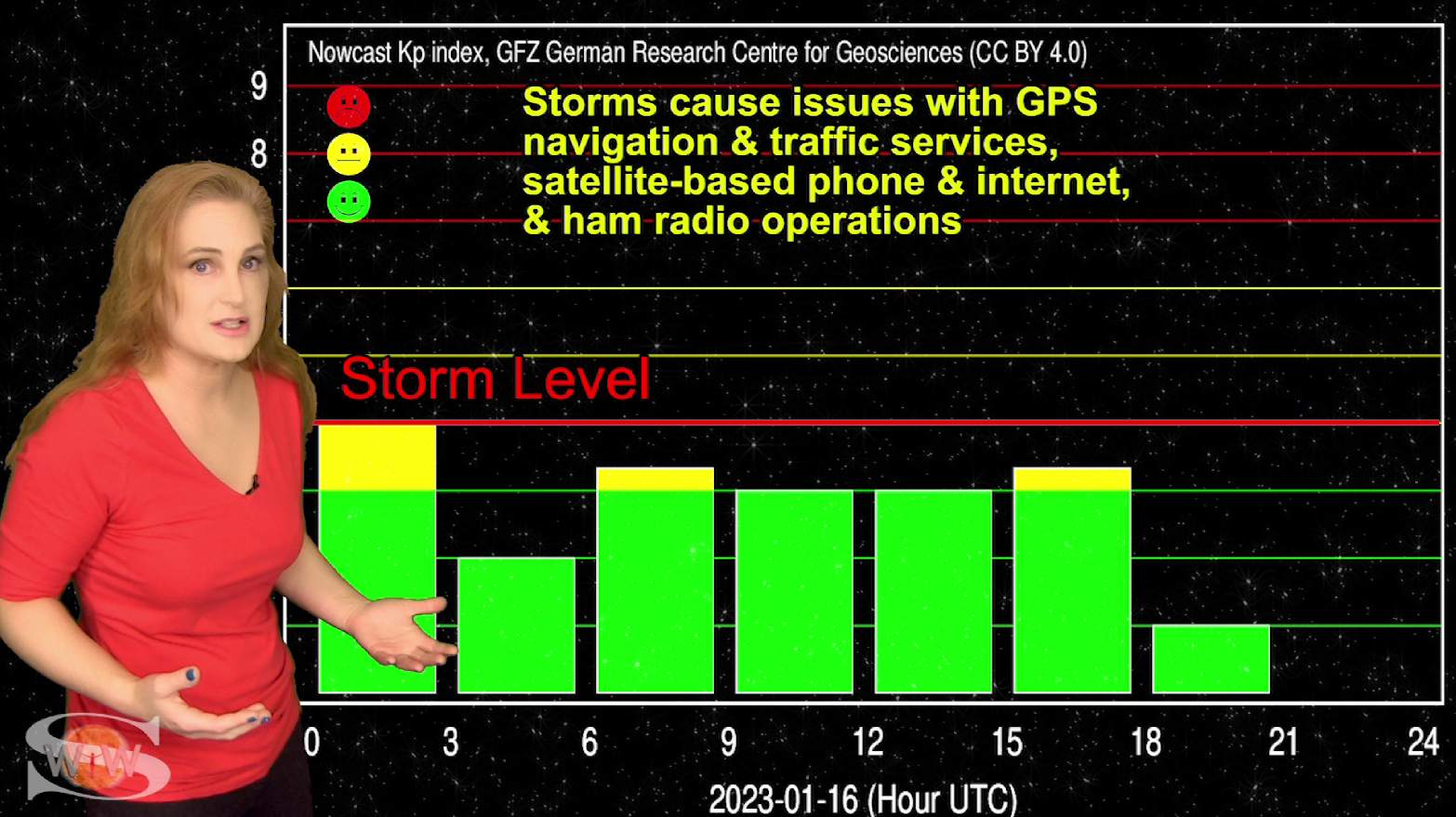This week our Star continues firing on all cylinders as over half of the nine active regions in Earth-view are either big-flare players or solar storm producers. the short-duration flares we enjoyed last week have given way to longer-duration flares that accompany solar storm launches. As such we now have one partly-Earth-directed solar storm that will graze Earth sometime around the 19th. Slow traffic in the solar wind ahead will likely cause a pileup before the storm arrives so effects at earth could begin as early as January 18. Aurora photographers at high-latitudes should get a sustained show that could last through the 20th. Aurora is also possible to mid-latitudes, but more sporadically. Amateur radio operators should rejoice this week as solar flux has now topped a new record, crossing over the 200-mark for the first time since Solar Cycle 25 began. Propagation will be excellent, despite the noise but long-duration R1 to R2-level radio blackouts will still be common on Earth’s dayside. GPS users at low latitudes should also be aware that as solar flux continues to increase, reception issues will worsen in the afternoon and early evening. Since issues are cumulative, GPS reception can be especially problematic near dawn and dusk when solar flares are also occurring. Learn the details of the coming solar storm, watch how radio blackouts from the big-flare players impact our communications, and find out what else our Sun has in store. Want early access to these forecasts, tutorials on Space Weather, & more? Visit: https://patreon.com/SpaceweatherWoman
Podcast: Play in new window | Download (Duration: 12:35 — 17.3MB)
Subscribe: Apple Podcasts | Spotify | RSS
